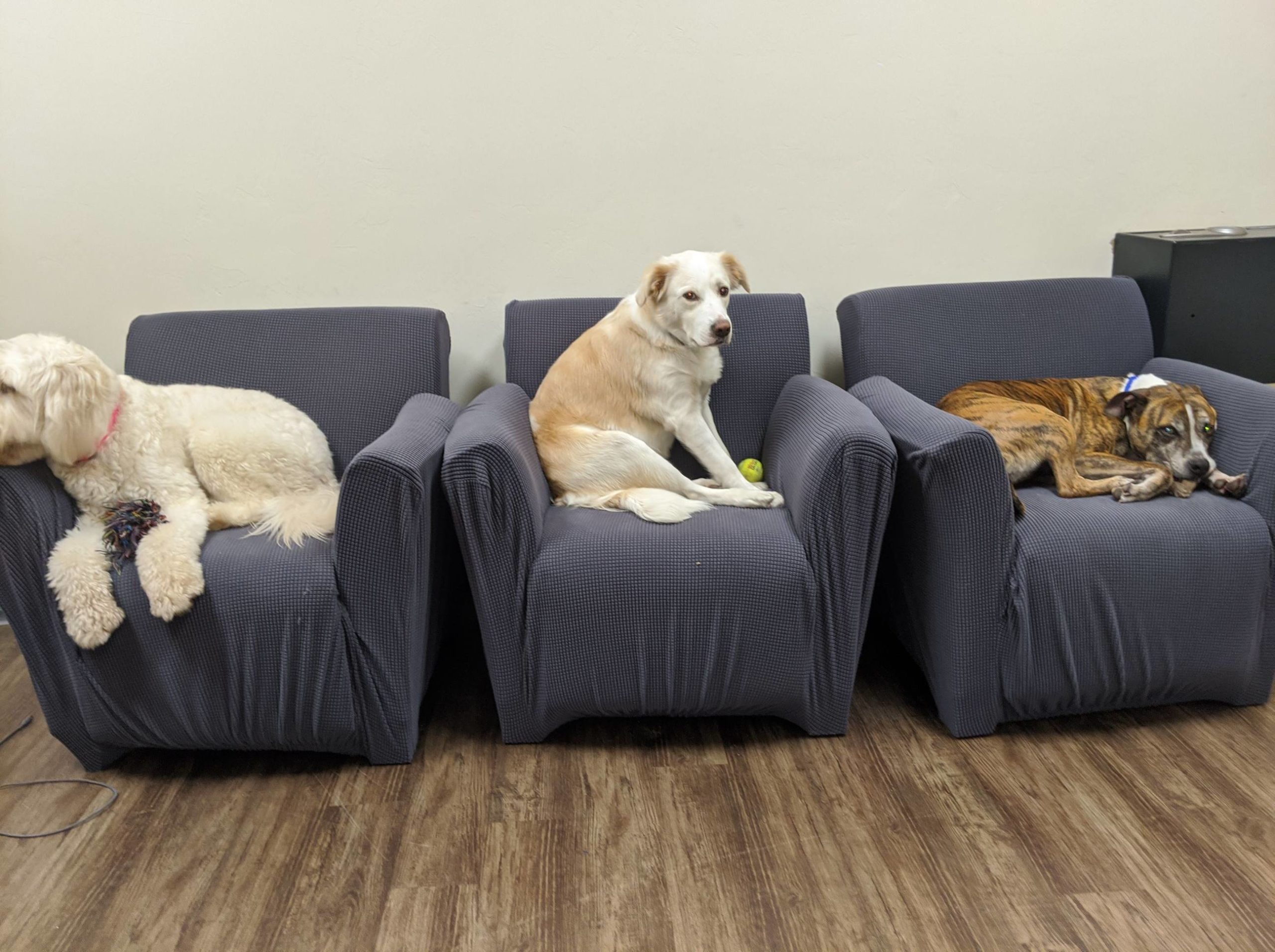When feeling stressed, many people would say that cuddling with their furry friend seems to cure all ills. A lick on the nose from your hound or a gentle nuzzle from your tabby cat has been shown to lower stress and bring feelings of intense happiness to owners. Does bringing those pets to the office extend these benefits for workers, especially in times of extreme stress? Let’s explore the idea of a pet-friendly workplace!
According to the Centers for Disease Control and Prevention, owning a pet has many mental and physical health benefits, including decreased blood pressure and cholesterol levels, less feelings of loneliness and increased opportunities for exercise and socialization.
In a 2012 study, employees who were around dogs in the workplace reported feeling less stressed than employees who have dogs but left them at home, according to researchers from Virginia Commonwealth University. The study also found that pets triggered social interactions that would not normally take place.
For Brad Stumpff, owner of UF Mover Guys, bringing his three dogs was originally to benefit the dogs so they would not be crated all day, every day. He brings Ziggy, his 4-year-old Pit Bull rescue, Marlo, a three-year-old Labrador Retriever, and Gerdie, a two-year-old Golden Doodle to the office on days when he is not out on his moving trucks. Stumpff has found that having his dogs in the office with him has not only made his days better, but has increased office morale. His receptionist also brings her Pit Bull rescue dog to the office most days.

“Our employees come into the office, which is in a warehouse, and throw around the tennis ball with each of the dogs, which really boosts morale and makes the office a lot more fun and enjoyable for all of us,” Stumpff said.
Pets in the workplace can provide an additional source of social support for employees, which has been associated with lower levels of depression and better job performance whereas low social support at work has been associated with diagnoses of depression and anxiety, according to a study in the International Journal of Environmental Research and Public Health.
How can pets improve productivity? Pets at the workplace can make employees happier, lower stress levels and create a more flexible environment, according to the Human Animal Bond Research Institute. Pets can create camaraderie within the workplace and trigger interactions that may not have happened without them. In addition, eliminating the added stress of having to rush home to let a pet out of the house can relax employees and allow them to stay longer to finish projects or collaborate further with work teams.
Depending on the environment, pets in the workplace can have a transformative effect on the workplace. For Gina Fox, owner of Down to Earth Boutique, a local boutique in Town of Tioga that sells unique clothing and jewelry, bringing her dog Bella to work has also had a positive effect on their customers. She brings Bella to Down to Earth two days a week.
“Bella loves going to work and seeing all of her people. It brings me great joy to see all my customers that love to see her,” Fox said. “My customers love to bring their kids and shop, while their kids play with her. It’s a win-win for everyone.”

“My employees love to have her around as well. Our environment is very family friendly, and Bella adds an extra element of fun to their experience,” Fox said.
What’s more is that Bella even attracts and boosts business. Bella often wears some of the boutique’s doggie sweaters, and typically they can’t “keep those sweaters in stock once Bella models them,” Fox said.
While there are many benefits of pets in the workplace, employers need to understand all of the factors involved. Employers need to have honest conversations with all employees to make sure they are all on board and comfortable with the policy. This includes considering allergies, fears and comfort levels. Organizations should establish clear and agreed-to guidelines and policies.
Employees should need to abide by certain factors for bringing their pets to work. This can include having animals on leashes or free to roam; contingencies for pets when their owners have to take phone calls or attend meetings; and how employers deal with complaints or conflicts.
Purina suggests creating an authorization and release form for employees to sign. Part of this authorization form should ensure that dogs and cats are potty-trained and have the correct temperament that will not disrupt the office environment. Animals should be comfortable around other people and pets. Employers should think about their office’s proximity to locations for potty breaks and institute some pet-free locations like bathrooms or kitchens.
For organizations that may want to become more pet-friendly without going “all in,” they may want to consider pet-friendly workplace days for employe es on different days to ensure that there isn’t an office full of pets on any given day.
Employers may also be concerned with the legal ramifications of a pet-friendly workplace. This may include personal injury and property protection. A possible solution is to require the pet owner get insurance that will cover any injuries or damages caused by the pet.
While becoming a pet-friendly workplace may not always be the correct fit for every organization, having pets at work can certainly work for some employees and workplaces.
Related articles:
Feel the Booty Burn with This Workout Routine

